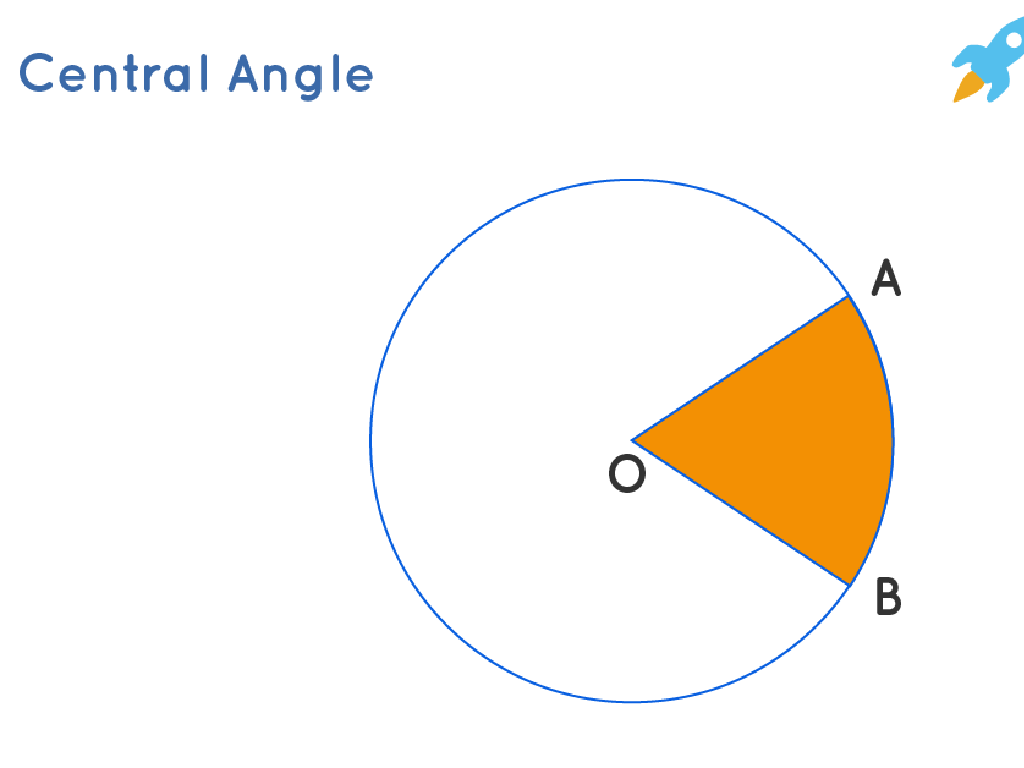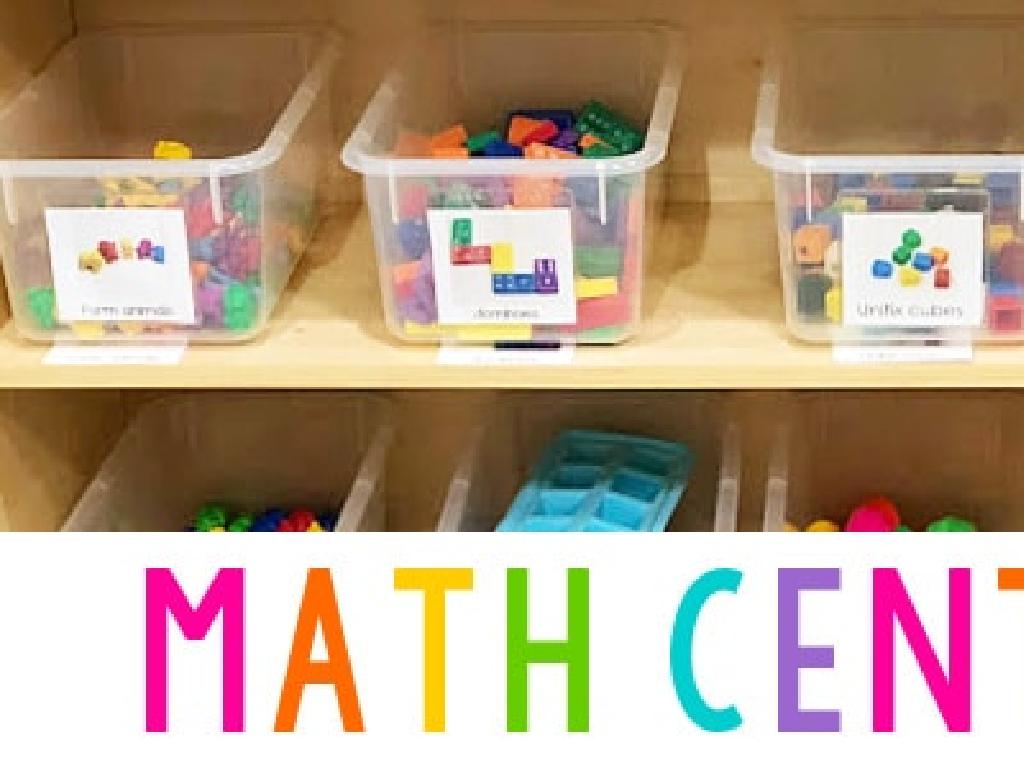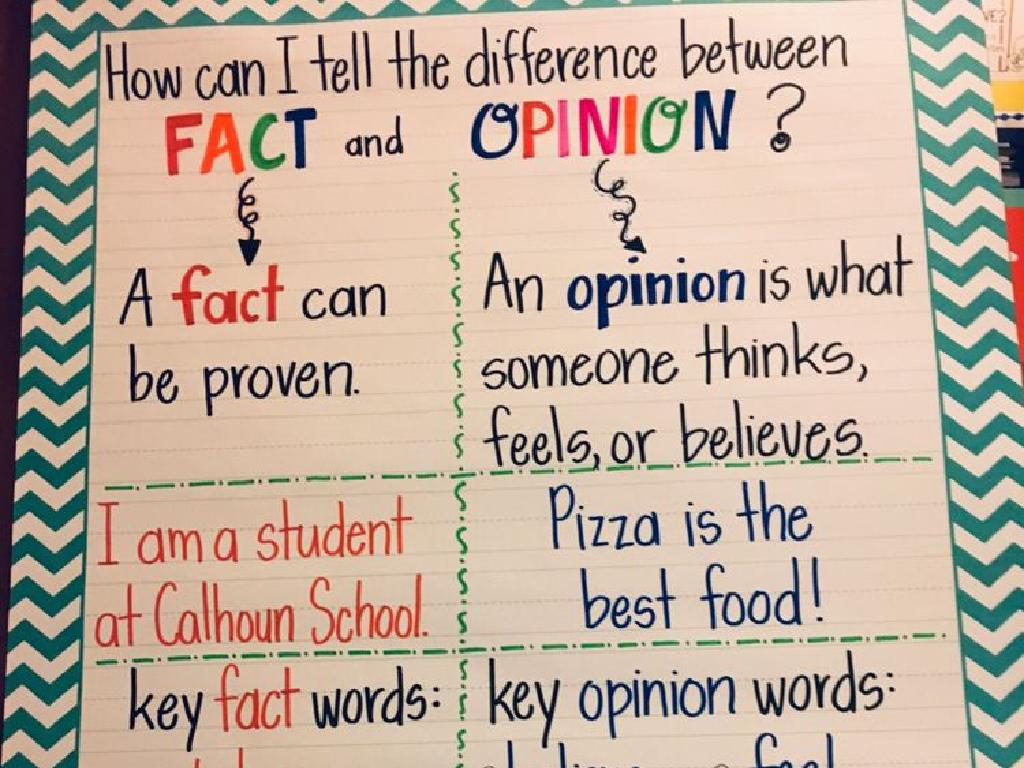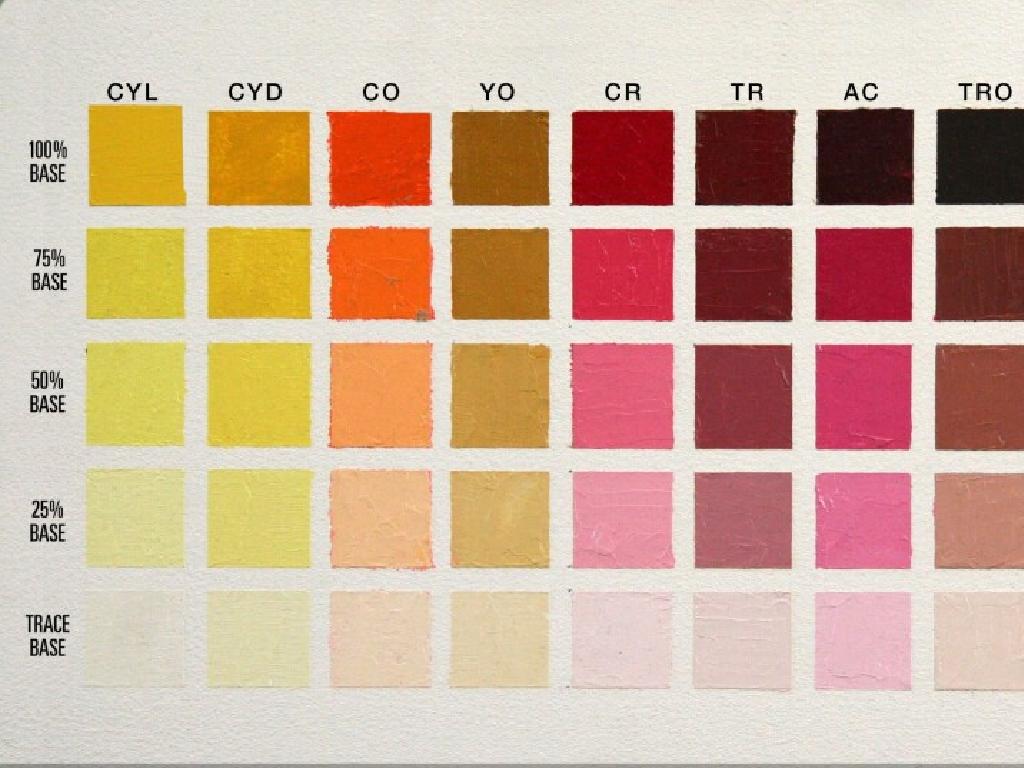Add And Subtract Money Amounts: Word Problems
Subject: Math
Grade: Sixth grade
Topic: Add And Subtract Decimals
Please LOG IN to download the presentation. Access is available to registered users only.
View More Content
Decimals and Money: Real-World Math
– Understanding decimals in money
– Money uses decimals to represent cents
– Relating money to real-world math
– Use math in shopping, budgeting, and saving
– Adding money amounts
– Combine totals from different items
– Subtracting money amounts
– Find the difference when giving change
|
This slide introduces students to the concept of decimals in the context of money, which is a practical application of their math skills. Start by explaining that decimals are used in money to represent parts of a dollar, like cents. Discuss how understanding money and decimals is essential for everyday tasks such as shopping, budgeting, and saving. Preview the process of adding money by combining totals from different items, which can be practiced through word problems. Similarly, introduce subtracting money amounts as finding the difference when giving change or comparing prices. Encourage students to think of times they have used these skills in real life and share their experiences. The goal is to make them see the relevance of math in their daily lives.
Understanding Decimals in Money
– Review decimal place values
– Ones, tenths, hundredths places
– Decimals represent dollars and cents
– $1 = 1.00, 50 cents = 0.50
– Examples of money as decimals
– $4.25, $0.99, $5.75, etc.
– Practice with real-world problems
|
Begin with a quick review of decimal place values, emphasizing the ones, tenths, and hundredths places, which are most relevant to money. Explain how decimals are used to represent money, with the decimal point separating dollars (to the left) and cents (to the right). Provide clear examples of decimal amounts in money, such as $4.25 representing 4 dollars and 25 cents. Conclude with practice problems that involve adding and subtracting different money amounts to help students apply their understanding of decimals in real-world contexts. Encourage students to think of money transactions they encounter in daily life, such as buying lunch or saving allowance, to make the concept more relatable.
Adding Money Amounts
– Steps to add money amounts
– List each amount vertically, ensuring decimals are lined up
– Align decimals for addition
– Place the decimal point in the sum directly below the others
– Example: $5.25 + $3.75
– Add $5.25 and $3.75: 5.25 + 3.75 = 9.00, so the total is $9.00
– Practice with different amounts
|
When teaching students to add money amounts, start by explaining the importance of aligning the decimal points. This ensures accuracy in the sum. Use an example like adding $5.25 and $3.75 to demonstrate the process. Write the amounts one under the other, align the decimal points, and then add as with whole numbers, placing the decimal point in the sum directly below the others. After explaining with the example, encourage students to practice with different amounts, reinforcing the concept of decimal alignment and addition. Provide additional practice problems for homework to solidify their understanding.
Subtracting Money Amounts
– Steps to subtract money
– Line up the decimals, subtract digits, borrow if needed.
– Borrowing in subtraction
– Just like in whole numbers, if the top digit is smaller, borrow from the next column.
– Example: $10.00 – $2.50
– Start with $10.00, take away $2.50, what’s left?
|
This slide is focused on teaching students the step-by-step process of subtracting money amounts, which is a practical application of subtracting decimals. Emphasize the importance of lining up the decimal points and subtracting each column starting from the right. Highlight the borrowing process, which is necessary when the digit in the subtrahend is larger than the corresponding digit in the minuend. Use the example of subtracting $2.50 from $10.00 to illustrate the concept. Have students practice with similar problems and ensure they understand the concept of ‘borrowing’ as it can be a common area of difficulty. Encourage them to think of real-life situations where they might need to subtract money, such as making a purchase with cash and calculating the change they should receive.
Word Problems: Adding Money
– Read the problem carefully
– Understand the scenario and what is being asked.
– Identify amounts to add
– Find and highlight the money amounts given.
– Solve with a real-world example
– Use an example: If you buy a toy for $5.75 and a book for $3.20, how much did you spend?
– Check your work
– Always double-check your addition to ensure accuracy.
|
This slide is aimed at teaching students how to approach word problems involving the addition of money. Emphasize the importance of reading the problem thoroughly to understand the context and what is being asked. Students should practice identifying the key amounts of money that need to be added together. Use relatable real-world examples, such as purchasing items with given prices, to illustrate how to solve these problems. Encourage students to always check their work to avoid simple addition errors. As an exercise, present several word problems for students to solve, and discuss the solutions as a class.
Subtracting Money: Word Problems
– Comprehend the question asked
– Read carefully to understand what you need to find out.
– Pinpoint amounts to subtract
– Identify the initial amount and how much needs to be subtracted.
– Solve with a real-world example
– Example: If a jacket costs $65 and you have $80, how much will you have after buying it?
– Check your work for accuracy
– Always go back to ensure your answer makes sense.
|
This slide is aimed at helping students tackle word problems involving subtraction of money. Start by reading the problem thoroughly to understand what is being asked. Then, identify the amounts involved, such as the starting amount of money and the cost of items. Use a relatable example, like purchasing an item with a given amount of money, to demonstrate the subtraction process. Encourage students to visualize the problem and use paper and pencil to calculate. After solving, students should check their work to ensure the answer is reasonable and makes sense in the context of the problem. This reinforces the practical application of subtraction in everyday financial decisions.
Practice Problems: Adding & Subtracting Money
– Solve individual practice problems
– Pair up and discuss solutions
– Share your approach with your partner and compare answers
– Explore various solving methods
– Are there shortcuts or different strategies you used?
– Group discussion on findings
|
This slide is designed to engage students in hands-on practice with adding and subtracting money through word problems. Students should work individually at first to solve the problems provided. Afterward, they will pair up with a partner to discuss their solutions and methods. Encourage them to consider different strategies, such as rounding, using a number line, or breaking down the problem into smaller parts. Conclude with a group discussion to share different methods and solutions. This activity will help students see the variety of ways to approach a problem and understand the importance of clear communication in math.
Class Activity: Grocery Store Challenge
– Receive a shopping list with prices
– Add prices to calculate total cost
– Subtract total from budget for balance
– Discuss challenges and share findings
Did you encounter any tricky prices? How did you overcome them?
|
In this interactive class activity, students will apply their knowledge of adding and subtracting decimals in a practical scenario. Provide each student with a mock shopping list including various items with prices. They will add up the prices to find the total cost of the items. Then, give them a budget amount from which they will subtract the total cost to determine how much money they would have left. This exercise will help them understand the real-world application of math in budgeting and shopping. After completing the calculations, facilitate a discussion where students can share their results and any challenges they faced, such as dealing with tricky prices or staying within budget. Possible activities include varying the budget for different students, using coupons to adjust prices, or comparing brand name vs. generic item costs.
Conclusion: Mastering Money Math
– Recap add/subtract money
– Accuracy in financial math
– Exactness is crucial for financial decisions
– Homework: Money word problems
– Solve problems involving various money transactions
– Practice makes perfect
– Consistent practice enhances skill proficiency
|
As we wrap up today’s lesson on adding and subtracting money amounts, remember the importance of precision in financial mathematics. Mistakes in calculations can lead to significant errors in real-world financial decisions. For homework, students will tackle word problems that require them to apply what they’ve learned about adding and subtracting money. This will not only reinforce their understanding but also prepare them for practical applications. Encourage students to practice regularly, as this will help them become more confident and proficient in handling money-related math problems.






